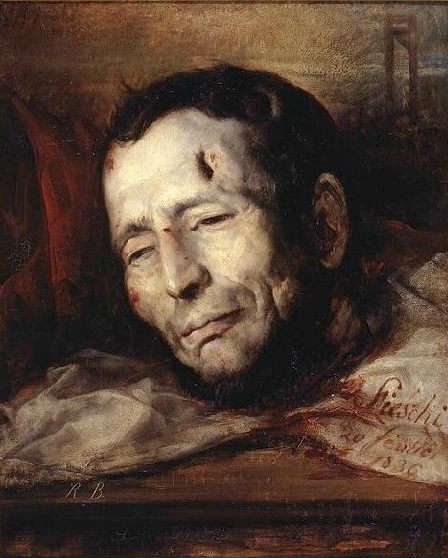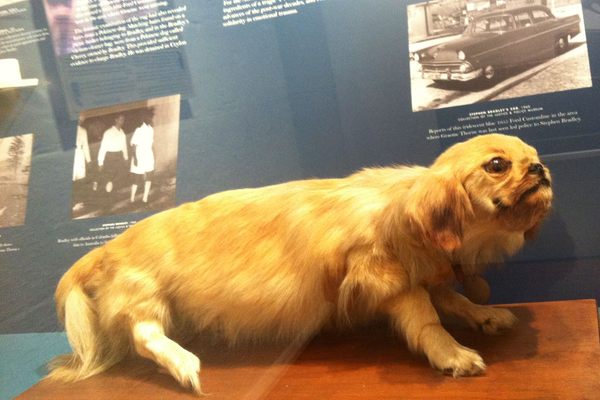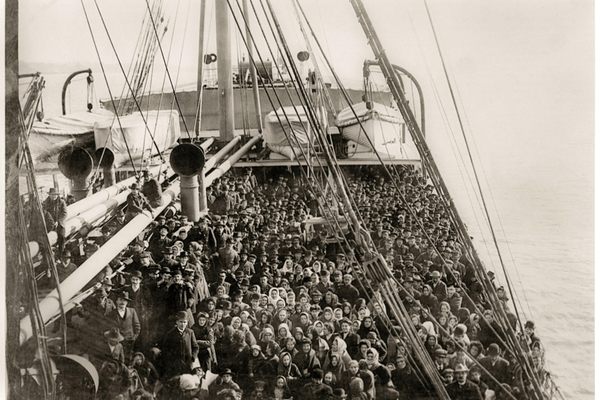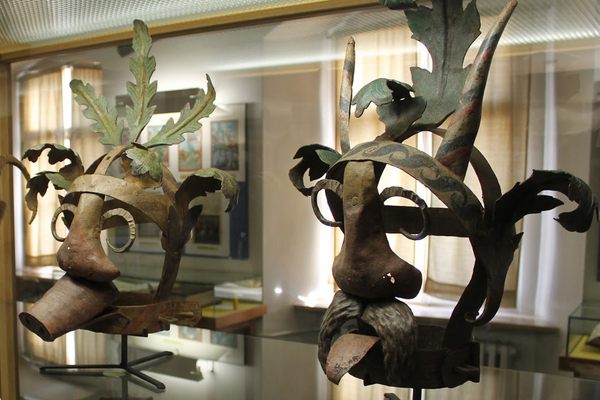Objects of Intrigue: The Infernal Machine
 The attack with the infernal machine illustrated by P. C. Geissler (1835) (via Bibliothèque nationale de France)
The attack with the infernal machine illustrated by P. C. Geissler (1835) (via Bibliothèque nationale de France)
The French Revolution wasn’t the end of kings in France. In 1830, the July Monarchy controlled by the wealthy elite took power, and King Louis-Philippe ruled. There were seven assassination attempts on this new king, but none so fantastic as Giuseppe Mario Fieschi’s “infernal machine.”
Fieschi, a Corsican with a prison record for fraud, was joined by co-conspirators Theodore Pepin and Pierre Morey, who encouraged the building of his diabolical device. Rather than fire just one shot at the king, or even three if the trio joined together, Fieschi constructed a mutant weapon with 25 barrels that could shoot at once, all pointing in different directions. The machine of wood and iron was finally set up on the third story of 50 Boulevard du Temple in Paris, and on July 28, 1835 put to its macabre test.
 The infernal machine on display at the French National Archives (photograph by the author)
The infernal machine on display at the French National Archives (photograph by the author)
Unfortunately, while gifted with super villain ideas for munitions, Fieschi was also foiled by the complexity of his plan. As the king rode by with the royal family in a procession, the infernal machine did let out a hideous volley. Unfortunately among the 42 injured was Fieschi himself, who had part of his face ripped off by a defective barrel. Outside the street, as one report put it, was suddenly “strewn with dead and dying men and horses.” 18 were killed, but not one of them was a member of the royal family, the king just barely grazed in the unaimed chaos. Smoke wafting from the third floor window immediately revealed the wounded Fieschi’s hideout and he was quickly arrested.
Rather than let his wounds fester, he was treated with the top physician care available for a dramatic trial, a spectacle that the Corsican readily adopted. According to Jill Harsin’s Barricades: The War of the Streets in Revolutionary Paris, 1830-1848, at the trial he ”clearly embraced his celebrity status, assumed that the slightest details about himself would interest the court, and entered into numerous narcissistic rambles about his thoughts, emotions, and habits.”
No good for Fieschi, who would ultimately be sentenced to death by guillotine, his perfectly healed head lopped off on February 19, 1836, alongside Pepin and Morey. But even immediately after the brutal massacre of the procession, the infernal machine was causing a sensation. A biography on Fieschi describing its gory details was released the same year as the attack, and in London a replica went on display that August alongside a Fieschi mannequin. A newspaper report described his unflattering faux double as ”very ill-looking ; his immense forehead, overhanging brow, deep-sunken eyes, and high cheek-bones, make more repulsive the animal character of his features.” Even his severed head would get the full oil painting portrait treatment:

The infernal machine is now on display at the National Archives in Paris, with a replica kept on view at the Paris Police Museum. Outside 50 Boulevard du Temple, a historic marker recalls the events of July 28, 1835. While unsuccessful as an implement of assassination (the 1848 Revolution would finally bring France into its Second Republic), the infernal machine remains one of the most spectacular and fiendish failures.
 The infernal machine at the National Archives (photograph by the author)
The infernal machine at the National Archives (photograph by the author)

A replica of the infernal machine at the Paris Police Museum (photograph by the author)
Objects of Intrigue is a feature highlighting extraordinary objects from the world’s great museums, private collections, historic libraries, and overlooked archives. See more incredible objects here >
















Follow us on Twitter to get the latest on the world's hidden wonders.
Like us on Facebook to get the latest on the world's hidden wonders.
Follow us on Twitter Like us on Facebook